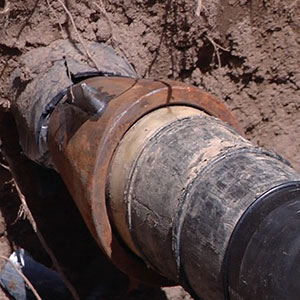Sewer drain clogs are a plumbing problem that can cause serious health problems. You have incoming water lines for clean water and sewage lines that take away the waste water from sinks, toilets and showers. The contaminated water can back up through your drains if the waste pipe is blocked or ruptured. Water containing waste solids can lead to mold growth. Water damage can occur to walls and floors due to the overflow.
Back-ups in sewer lines are not self-correcting and cannot be repaired by DIY. If you detect a problem in your home’s wastewater system early and repair it promptly, the blockage will not be complete. A completely clogged drain line can lead to wastewater overflowing into your home. This is a serious health risk and can be a major cleaning problem. You can learn how to avoid this problem, when it occurs and what you should do in the event that it does. The best way to prevent sewage from overflowing into your bathroom, is to treat the problem as soon as possible.
Sewer Drain Clog Signs
If you notice slow drains in your entire home, this could be an indication that the sewer system is clogged. A hair remover, or even a plunger can be used to clear a clog in one drain. If you have an issue in more than one drain, it is likely a sewer problem.
If you suspect that your sewer drain is clogged, look out for any unusual or unexpected reactions to plumbing fixtures.
- Toilets : The sewer drain is the main drain in your home. If there’s a problem, you’ll notice it first. When you flush your toilet, water may back up in the shower, bathtub, or toilet. This is usually an indication of a clogged sewer drain.
- Shower and tub If you suspect that the sewer drain is clogged, check to see if the shower and tub drains are blocked.
- Sink: Run the water in the nearest sink for one minute. If you see water rising in the sink or toilet bubbles then it is likely that the blockage is in the main sewer pipe and not the toilet.
- Washing Machine If the water draining from the washing machine overflows into the shower or tub and causes it to overflow, or backs into the shower or tub, this could be an indication that the sewer main has clogged. This can be caused by a problem with the washing machine or shower.
If waste overflows into another drain or pipe when you use the washing machine or flush your toilet, this can be an indication of a more serious sewer drain blockage. You may have a sewer drain blockage if waste overflows from your sinks, toilets, bathtubs and washing machines.
Your toilet can back up and spill germ-laden liquid onto the bathroom floor. This is not something to take lightly. You must stay away from the area until it is thoroughly cleaned and sanitized. You should also stop everyone from using your plumbing system until the drainage system is repaired. We give priority to emergency plumbing calls at Trenchless Pipe Repair. We offer a free estimate on site and excellent advice. We immediately start work on securing your house to solve the problem as soon as possible.
Annual maintenance can prevent some sewer backups. To prevent a buildup, have your sewer lines cleaned annually by a licensed plumber. This includes the drains leading into the home and the ones that lead to city lines.
The plumbers will check the buried pipes that connect to the city stubs and look for any tree roots, breaks, fat accumulation or grease that may require more than just rootering the lines.
What you should do if the sewer drain is clogged and backing up
If you’re not certain that the drains aren’t clogged with hair or other typical clogs, don’t use liquid drain cleaners. This type of clog is unlikely to be cleared by liquid drain cleaners. The overflowing water from a sewer drain blockage may contain harmful chemicals. It is better to plunge the drains, and remove excess hair using a hair removal tool that can be found in most hardware stores.
If you notice that the water in your toilet or bathtub is overflowing, it may be a bigger problem. You will need more tools to fix the issue.You must turn off all water flowing into drains if you have a severe backup that causes waste or water to flood your home. Cut off water going to the toilets. Turn off the electricity as well if wastewater is near electrical outlets. It is best to shut down the power for your entire home, but you can also turn off electricity in the affected areas if you are familiar with the correct fuse or breaker.
It is recommended that, in this case, you contact a master plumber who has the necessary education and experience to assess the situation and create an immediate plan of action. They can contain the situation by minimizing contamination, and they know the causes of the back-up. The potential damage to your house and the nature wastewater can cause, requires that every step be taken correctly.

